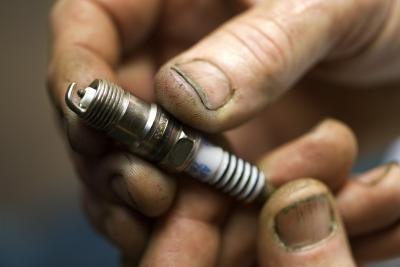Tuesday, February 4, 2014
Does the Length of the Spark Plug Cables Matter

Plug wires arent the most glorious part of any engine, but they are a bit more complicated than most give them credit for being. While wire length may not seem particularly critical, those wires carry an enormous amount of high-voltage power. Pay close attention to your plug wires, or they may end up sending a message that leaves you saying "Can you hear me now?"
Plug Wire Factors
Two things come into play when discussing spark plug wire length: the resistance of the wire in ohms, and the amount of radio frequency interference it produces. The ohm is a measure of a wires efficiency in passing electrical current. Smaller and less-efficient wires rate higher in ohms, meaning that theyll convert more electrical energy into heat in the plug wire instead of passing it to the plug. Resistance in the plug creates a discharge of positive radio waves, which ground out in a cars stereo system and create static through the speakers.
Ohms and Wires
Different grades of wires produce various levels of ohms per foot. An average stock spark plug wire creates about 5,000 ohms of resistance per foot of length; high-performance wires will average between 100 and 400 ohms, and high-grade race wires may go as low as 2 to 10 ohms. If you apply Ohms Law of voltage loss (Voltage Loss = amperes flowing through wire X ohms of resistance) to a typical high-performance ignition system where the coil produces about 20,000 volts and sends about 0.010 amps to the wires, youll find that a stock wire will cause a drop of about 50 volts per foot, a performance wire will drop about 1 to 4 volts per foot and a race wire might drop as little as little as 0.02 volt per foot.
Voltage Output and Plug Length
Since resistance to flow increases by wire length in feet, multiplying the spark plug wires length in feet by its voltage loss per foot will tell you its impact on spark plug power. In the worst-case scenario, assume that a stock 5,000-ohm wire measures a whopping 4 feet long. Thats a 200-volt drop from ignition coil to plug wire -- a seemingly insignificant 1 percent drop. However, that 200-volt energy loss will go into creating heat in the wire, and ohms of resistance go up with heat. The end result is a cascade effect of failure; the current flow and heat gain will eventually reach an equilibrium, but not before producing a noticeable drop in current, damaging the wires conductive core and hindering its RFI-suppressive qualities.
RFI and Solutions
You can get away with using longer plug wires by using a lower-resistance wire, one thats either thicker or higher quality. However, higher current flows also produce more RFI, which means that youll also need to use a high-quality RFI-shielded wire to prevent interference through the radio system. Even if you never listen to anything but MP3s and CDs, remember that RFI interference is an extremely broadband signal. Under certain circumstances, this signal can reach into the frequency ranges commonly used for cell phones and other communications devices, effectively scrambling the signal. So, if your phone seems to constantly drop calls while in the car, you might want to take a look at those old, cheap or mile-long plug wires.
No comments:
Post a Comment